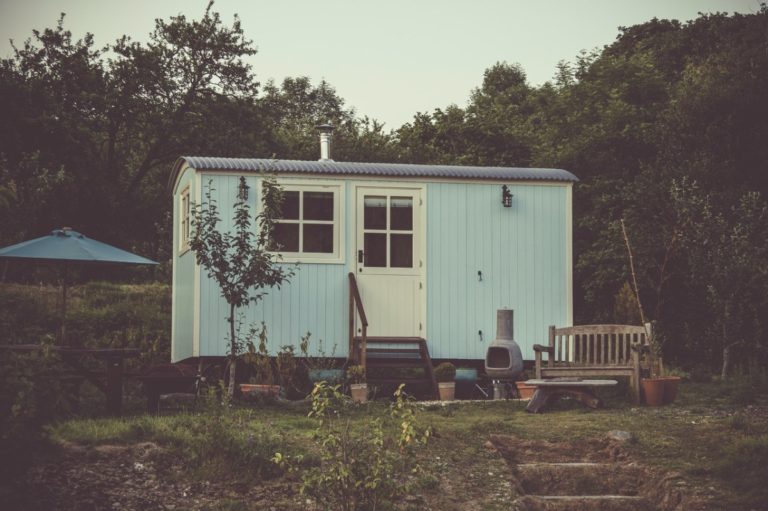As costs of living continue to rise, more people are abandoning their big homes in favor of tiny ones, going as far as full RV-living. Tiny homes are acclaimed as a radical and creative way to address the lack of affordable housing, and to reduce living costs and environmental impact.
But if trailers and RVs are too tiny for you, how far should you downsize your home? To be considered tiny, a house shouldn’t exceed 400 sq ft. (37 m²). There isn’t a golden rule to this, though. You can go over that limit and reach 1,000 sq ft. (93 m²), but you’d be crossing the small house territory then.
If you’re building your tiny home on a foundation, there are other things to consider as well. The reason most tiny home dwellers opt for trailers or RV is so that they can dodge zoning laws. When your home is on wheels, you’re not just free to take it wherever you want, but you’re also under the radar of council laws. No one can dictate how big or small your dwelling should be, or what building materials can you use.
Building a tiny home on a big plot of land is another crucial matter to address. Some councils set standards for what’s considered a livable home. So before shrinking down your big house, take note of these pointers first:
1. Consider Your Land’s Location
If you don’t plan on moving out, but just downsize your current home instead, that can be one less burden for you, since you already have land. But you still need to seek approval from your local council before building your tiny dream home. The application and approval process are no different from those of an average-sized home.
If you’re still looking into the best lands for sale, consider their locations. The nearer the land is to a major city, the more expensive the building and living costs will be. Rural areas have the cheapest lands, but commercial districts are harder to access when you’re there. That will pose a problem when you age and need more medical attention.
Considering that, the suburbs are your best bet. It’s surrounded by nature, close to the commercial district, but still peaceful and easier on the pockets. Besides, you can save money on utilities, driving your overall costs of living lower.
2. Don’t Make Your Tiny Home as Small as a Caravan
In Australia, many local governments regard a tiny home as a variation of a caravan, which is illegal in their municipalities. Even if you own the land your tiny home is built on, you can still run into some issues with your local council. That’s because according to Australian law, you can’t live in a caravan full-time.
Heather Shearer, a researcher at the Cities Research Institute at Griffith University, says that a tiny house isn’t making the best use of land, especially if the land is close to the Central Business District. So if the law is going to be an issue in your tiny house project, either settle for a real caravan and go under the radar, or venture into the small house territory.

3. Construction Costs Can Still be High
Aside from the land costs, the structural materials of a tiny house can also add up to its overall costs. So if you’re currently struggling with your bills and other expenses, downsizing won’t be a miracle solution to that problem. You have to settle your financial obligations first before investing another sum of your income for a tiny home.
In fact, if you can’t afford the average deposit for a brick house, you won’t likely afford a tiny house either. Worse, you can’t finance it through a conventional mortgage, especially if you won’t attach the house to the land. But if you’re building it on a foundation, you might meet better luck. Mortgage providers require to prefer real assets that appreciate in value over time.
4. Stick to What Your Budget Can Afford
Taxes, transportation, and groceries are other costs to consider. If situating your tiny home on an expensive land will influence those costs and make them higher, look into free lands or farmlands. In those areas, a 400 sq ft. home will be more acceptable. Plus, you can grow your own produce in the land and save money on groceries. Needless to say, your transportation costs and taxes can go lower too. Unless you’d use a car because you drive to the city for work.
In any case, ensure that your tiny home will meet all your goals, which are saving money and reducing your carbon footprint. A tiny home isn’t just a trend that makes for social media worthy photos. It takes serious commitment to be able to thrive in such a state of living. So take as much time as you need for thinking before giving up your mound of possessions and space.



